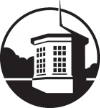The American liberal arts college sets a standard of excellence for undergraduate education that has long been recognized around the world. In the 19th century Haverford and other small, private colleges were in the vanguard of the spread of educational opportunity in North America. In the 21st century residential liberal arts colleges retain their outsized influence yet are a small component in the American system of higher education, claiming less than 2% of the total number of matriculants. The dominant enrollment trends are towards large, public, nonresidential—including for-profit and on-line— institutions with multidimensional missions including pre-professional, vocational, applied, community- based, and adult education.
The higher education landscape is currently one of great uncertainty, the causes of which are well known. Higher education’s economic model is such that costs continue to outpace inflation, exacerbated by the competitive forces of a market economy, with no obvious end in sight. Technology continues to change the way institutions operate and educate, even if we are uncertain where exactly it will lead us. Demographic shifts already well underway mean that colleges of all stripes will increasingly serve students with different educational needs from those of previous generations. Finally, in light of these trends and others, the public is increasingly skeptical of the value, direction, and integrity of the higher education system.
While the challenges are indeed sobering, the liberal arts college remains an exemplary model of education, arguably the best way to prepare young people for lives of high purpose, integrity, and engagement, a commitment that has special urgency given the forces eroding such values in the larger world. As was said at the 1995 Pew Higher Education Roundtable:
It is the liberal arts college—residential, devoted to instruction in the broad curriculum of the arts and sciences, designed as a place of growth and experimentation for the young—that remains the mind’s shorthand for an education at its best. Architecturally and philosophically, the liberal arts college embodies the ideal of learning as an act of community, in which students and faculty come together to explore and extend the foundations of knowledge. The intimacy of the residential setting, the emphasis placed on teaching, the celebration of the liberal arts as the foundation for a lifetime of learning—all define the ideal form of scholarly purpose and endeavor in undergraduate institutions.
Even among the United States’ robust cohort of elite liberal arts colleges, Haverford is distinctive. By dint of a fortunate blend of size, location, history, and ethos—most profoundly its commitment to Quaker-rooted practices of self-government, community, and both personal and institutional accountability—the College fosters its students’ commitment both to academic proficiency grounded in rational inquiry and to ethical engagement sharpened by critical reflection. It is this dialectical synthesis of disinterested and activated learning that lends a Haverford education its peculiar power to shape the whole person as an agent of personal and collective realization. And it is elementally toward achieving an improved version of that synthetic ideal that the Plan for Haverford 2020 has been crafted.
The Plan articulates an academically compelling, publicly comprehensible, and economically sustainable vision for Haverford College designed to assure that it fulfills its potential as a transformative educational institution. Haverford should join with others, including especially its Tri-Co partners, in being a clarion voice for the importance and the effectiveness of a rigorous liberal arts education and for “the ideal of learning as an act of community.” Indeed, far from being in the backwater while dominant trends wash over higher education, Haverford represents an important countervailing current, but also the model of enlightened leadership in an age of rapid change and uncertainty.
The great challenge before us is not one of identity or purpose, but rather in recognizing that this time of change in higher education is also one of opportunity. In our time, we must build on what we have achieved and what we believe in order to strengthen our institution and serve our mission more effectively.
